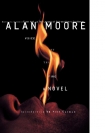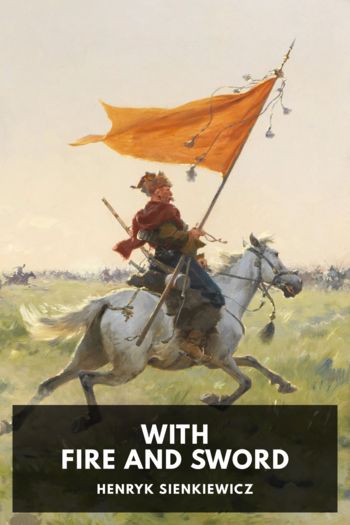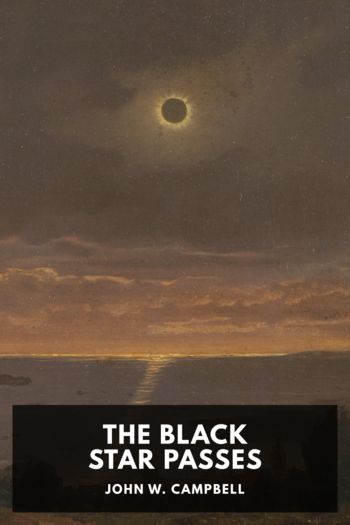Voice of the Fire, Alan Moore [year 2 reading books .TXT] 📗

- Author: Alan Moore
Book online «Voice of the Fire, Alan Moore [year 2 reading books .TXT] 📗». Author Alan Moore
To be quite fair, the whole spread of estates from Spencer to King’s Heath has had a post-nuclear appearance since the sixties. Just a decade earlier, King’s Heath had won awards for its design, seen as the perfect model for a future England which, unluckily, it proved to be. By 1970 even the sweetshop had steel shutters, and neglected dogs banded together into terrifying medieval hunting packs. The local nightspot seemed to have been decorated by a schizophrenic window-dresser who’d last visited the cinema for Barbarella, or perhaps Repulsion, with gaunt female mannequins emerging anorexic and concussed from wall and pillar into an emetic light show. King’s Heath youth struck matches on the plaster nipples, passing round ten Sovereign, and drank themselves into amnesia or animosity beneath the swirling biriani-coloured radiance of a faulty gel-wheel, later for the most part either knocked or banged up in accordance with their gender. The town shrugs, in timeworn response to its own physical decline: it’s not as if it was expecting something better.
Switch the television off, momentarily defeated. Partly concealed by three weeks of unread New Scientist and empty biscuit wrappings, is a draft of the preceding chapter. Still not sure whether the shop in Bridge Street that offered a job to Lily Rouse was a confectioner’s or not, but in the end decide to let it stand in deference to the processes of fiction rather than the less substantial processes of history. Lily remains between the sugar-cataracted jars; proclaims her husband’s innocence with wince-inducing loyalty while weighing out the Rainbow Drops. They drive him out to Bedford Prison, Bunyan’s second home, and he goes to the gallows, ultimate suspender, with her name upon his lips, no minor feat of memory when one considers all the wives and co-parents he might have thought to mention. What’s it all about, Alfie?
Bunyan: first to chart the land of spirit and imagination lying under middle England, mapping actual journeys undertaken in the solid realm on to his allegorical terrain. Likewise, it seems that the intention of his work was to awake the apprehension of a visionary landscape from beneath the subjugated streets and fields; fire an incendiary dream to make the dull and heavy matter of the shires and townships burn with new significance, and be transformed. September 1681 saw a new charter brought down by the Earl of Peterborough in Northampton, with these scenes reprised in Bunyan’s Holy War the following year, but relocated to the allegoric town of Mansoul. In this alias, the sense of mythic weight and moment wielded by the place and its inhabitants is underscored, the town’s huge and invisible centrality confirmed.
One great advantage that The Pilgrim’s Progress as a narrative enjoys over the current work is in its structure, with the pilgrimage progressing to a necessary ending in redemption. Here, however, there is no such tidy resolution within reach. The territory is the same, but here we have no single pilgrim save perhaps the author, or the reader, and only uncertain progress. While redemption’s not out of the question, it’s an outside chance at best. It’s hardly been a major theme thus far.
This final chapter is the thing. Committed to a present-day first-person narrative, there seems no other option save a personal appearance, which in turn demands a strictly documentary approach: it wouldn’t do to simply make things up. This is a fiction, not a lie.
Of course, that tends to place the burden of responsibility for finishing the novel on the town itself. If all its themes, motifs and speculations are to be resolved, then they will be resolved in actual brick and flesh. Trust in the fictive process, in the occult interweaving of text and event must be unwavering and absolute. This is the magic place, the mad place at the spark gap between word and world. All of the subtle energies pass through here on their journey into form. If properly directed, they’ll provide the closures that the narrative demands: the terrible black dogs shall come. There shall be fires, and severed heads, and angel language. An unlikely harmony of incident and artifice is called for, that may take some tracking down. There’s nothing for it but to take a walk.
Outside, the rain falls hard upon Phipps’ Fire Escape, a constant amber static through the Lucozade glow of the sodium lamps. This whole estate was raised by brewer and industrialist Pickering Phipps around the turn of the century as a last-ditch attempt at spiritual salvation. Long odds, from the look of things.
He placed a foundry up on Hunsbury Hill to overlook the town and gouged away at the remains of the adjacent Iron Age settlement in search of ore to build the railway. Most of what he paid his labourers would be returned to him across the bar-tops of his taverns on the Friday night he doled it out. Northampton had a lot of pubs back then. You could start at the top of Bridge Street and with only half a pint of bitter at each stop along the way never reach the Plough Hotel down at the bottom end, by then receded to Infinity.
Phipps reasoned that his drinking dens might be perceived as having set temptation on the straight path of the righteous and that taking a dim view of all this, the Almighty would be certain to condemn him to the flames. His only chance, the way he saw it, was to curry the Creator’s favour by constructing an estate that had four churches but no public houses. By slipping this modest bribe to God, seen as Northampton Borough representative writ large, the





Comments (0)